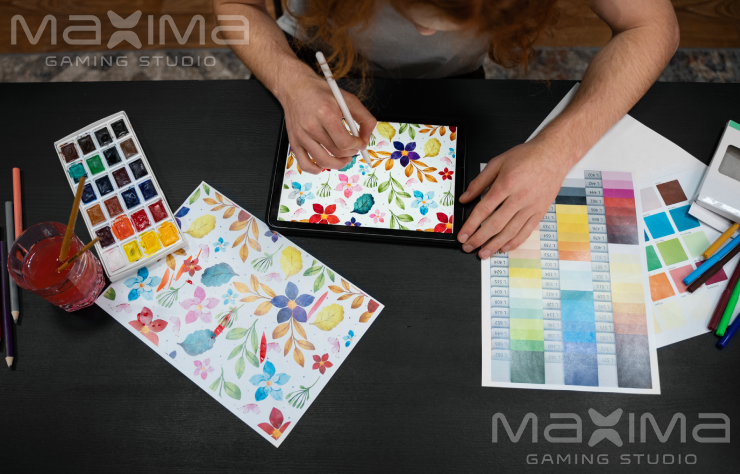 August 18, 2025
August 18, 2025
How Color Theory Impacts Player Emotion
Colors aren’t just decoration in games — they’re powerful tools that shape how players feel, react, and even play. Every shade, from the fiery red of an enemy’s attack to the calming blue of a safe zone, tells a story. Game developers who understand color theory can design worlds that deeply connect with players on an emotional level.
Why Color Matters in Game Design
Colors affect the human brain subconsciously. They can:
- Influence mood (calm, excitement, fear).
- Guide player focus (health bars, quest markers).
- Enhance immersion in a game world.
- Communicate narrative themes without words.
In short, color is both a psychological trigger and a gameplay mechanic.
Core Color Associations in Games
Here are the most common color-emotion connections developers use:
- Red: Danger, urgency, aggression. (Example: low-health warnings)
- Blue: Calm, trust, stability. (Example: safe zones or healing powers)
- Green: Growth, health, nature. (Example: health potions, lush environments)
- Yellow: Energy, optimism, caution. (Example: collectible coins or warning signs)
- Black: Mystery, fear, death. (Example: horror environments, boss battles)
- White: Purity, hope, peace. (Example: respawn areas, healing auras)
- Purple: Magic, luxury, mystery. (Example: rare items, spellcasting)
How Developers Use Color Theory in Games
Directing Attention
Bright or contrasting colors highlight interactive objects, loot, or quest markers.
Setting the Mood
A horror game with desaturated greys creates tension.
A fantasy adventure with warm, glowing tones feels welcoming.
Reinforcing Game Mechanics
Red = damage, green = heal, blue = mana.
Players instantly understand what’s happening without reading text.
Storytelling Without Words
A ruined land might be painted in dark, muddy tones.
A hopeful ending could shift the palette to bright, vibrant hues.
Famous Examples of Color in Games
- Inside (Playdead): Uses monochrome greys with sharp reds to create suspense.
- The Legend of Zelda: Breath of the Wild → Soft blues and greens emphasize exploration and freedom.
- Among Us: Color-coded characters make identity and suspicion central to gameplay.
- Hades: Warm reds and golds amplify the chaotic, underworld atmosphere.
Tips for Game Developers
Use contrast to separate important elements from the background.
- Choose a limited palette to keep visual consistency.
- Match the emotional tone of your story with the right colors.
- Test with players — what feels “calming” to you might not for everyone.
Final Thoughts
Color theory is more than just picking what “looks nice.” It’s about designing with player psychology in mind. The right palette can immerse players, intensify emotions, and make your game unforgettable.
So, the next time you design a level, think beyond mechanics — think in color


